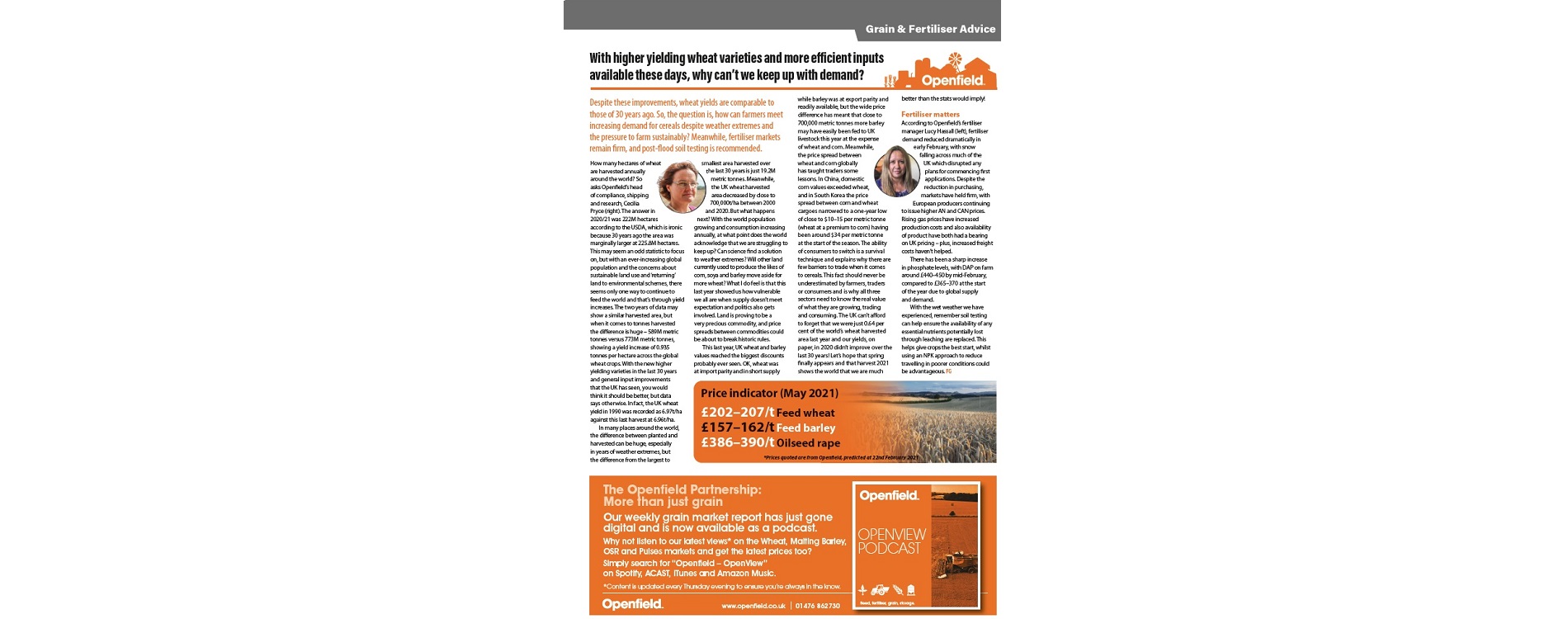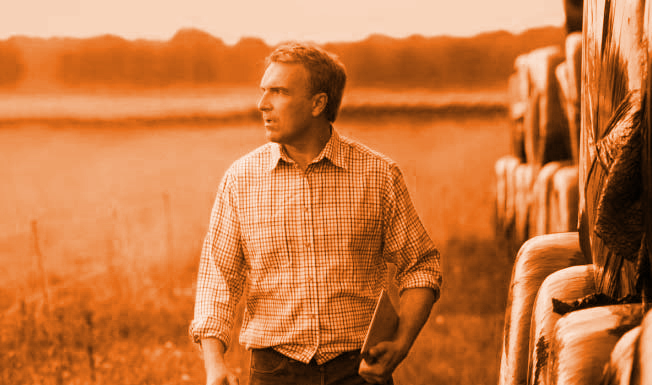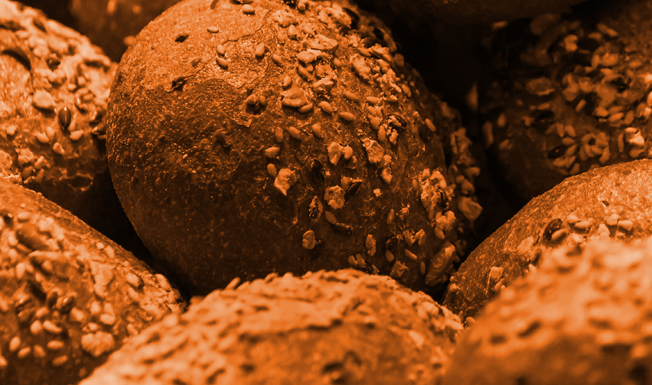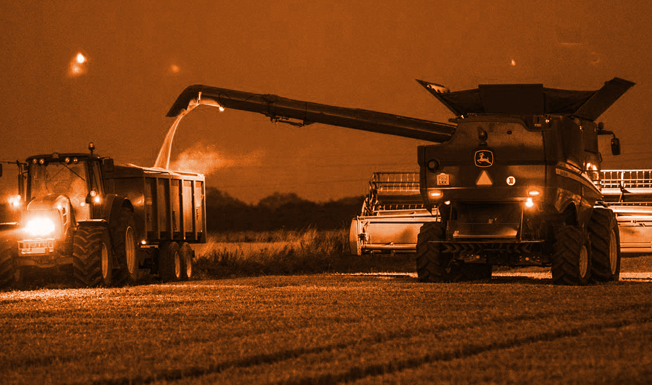With higher yielding wheat varieties and more efficient inputs available these days, why can’t we keep up with demand?
Despite these improvements, wheat yields are comparable to those of 30 years ago. So, the question is, how can farmers meet increasing demand for cereals despite weather extremes and the pressure to farm sustainably? Meanwhile, fertiliser markets remain firm, and post-flood soil testing is recommended.
How many hectares of wheat are harvested annually around the world? The answer in 2020/21 was 222M hectares according to the USDA, which is ironic because 30 years ago the area was marginally larger at 225.8M hectares. This may seem an odd statistic to focus on, but with an ever-increasing global population and the concerns about sustainable land use and ‘returning’ land to environmental schemes, there seems only one way to continue to feed the world and that’s through yield increases. The two years of data may show a similar harvested area, but when it comes to tonnes harvested the difference is huge – 589M metric tonnes versus 773M metric tonnes, showing a yield increase of 0.935 tonnes per hectare across the global wheat crops. With the new higher yielding varieties in the last 30 years and general input improvements that the UK has seen, you would think it should be better, but data says otherwise. In fact, the UK wheat yield in 1990 was recorded as 6.97t/ha against this last harvest at 6.96t/ha. In many places around the world, the difference between planted and harvested can be huge, especially in years of weather extremes, but the difference from the largest to smallest area harvested over the last 30 years is just 19.2M metric tonnes. Meanwhile, the UK wheat harvested area decreased by close to 700,000t/ha between 2000 nd 2020. But what happens next? With the world population growing and consumption increasing annually, at what point does the world acknowledge that we are struggling to keep up? Can science find a solution to weather extremes? Will other land currently used to produce the likes of corn, soya and barley move aside for more wheat? What I do feel is that this last year showed us how vulnerable we all are when supply doesn’t meet expectation and politics also gets involved. Land is proving to be a very precious commodity, and price spreads between commodities could be about to break historic rules. This last year, UK wheat and barley values reached the biggest discounts probably ever seen. OK, wheat was at import parity and in short supply while barley was at export parity and readily available, but the wide price difference has meant that close to 700,000 metric tonnes more barley may have easily been fed to UK livestock this year at the expense of wheat and corn. Meanwhile, the price spread between wheat and corn globally has taught traders some lessons. In China, domestic corn values exceeded wheat, and in South Korea the price spread between corn and wheat cargoes narrowed to a one-year low of close to $10–15 per metric tonne (wheat at a premium to corn) having been around $34 per metric tonne at the start of the season. The ability of consumers to switch is a survival technique and explains why there are few barriers to trade when it comes to cereals. This fact should never be underestimated by farmers, traders or consumers and is why all three sectors need to know the real value of what they are growing, trading and consuming. The UK can’t afford to forget that we were just 0.64 per cent of the world’s wheat harvested area last year and our yields, on paper, in 2020 didn’t improve over the last 30 years! Let’s hope that spring finally appears and that harvest 2021 shows the world that we are much better than the stats would imply!
Fertiliser matters
Fertiliser demand reduced dramatically in early February, with snow falling across much of the UK which disrupted any plans for commencing first applications. Despite the reduction in purchasing, markets have held firm, with European producers continuing to issue higher AN and CAN prices. Rising gas prices have increased production costs and also availability of product have both had a bearing on UK pricing – plus, increased freight costs haven’t helped. There has been a sharp increase in phosphate levels, with DAP on farm around £440–450 by mid-February, compared to £365–370 at the start of the year due to global supply and demand.
With the wet weather we have experienced, remember soil testing can help ensure the availability of any essential nutrients potentially lost through leaching are replaced. This helps give crops the best start, whilst using an NPK approach to reduce travelling in poorer conditions could be advantageous.




